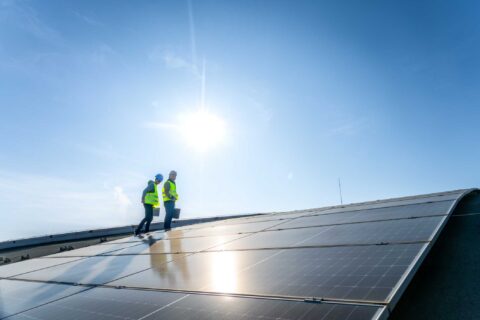The Current Trends in Solar Technology

Solar energy is the fastest-growing source of clean energy worldwide, and particularly in the US. In a May 2023 press release, CNBC reported that solar accounted for 46% of all new US sources of electricity generated in 2022, compared to 4% in 2010. We’ve come a long way in advancing solar technology, but where did it all start? How did we get here? How much of this advancement has occurred in recent years? Let’s look back and marvel at the progression of solar till this point.
When Was Solar Technology Invented?
In 1839, French physicist Alexandre Becquerel discovered light as an energy source for electricity generation while experimenting with metals and current-conducting liquids. After Heinrich Hertz and Willoughby Smith discovered electricity generation between two metallic materials in solar accounted for 46% of all new US sources of electricity generated in 2022
he presence of light, Polish scientist Jan Czochralski stepped into the limelight. (Pardon the pun.) By 1941, he had not only constructed the first solar cells but discovered that silicon could be used for their production.
Why did these individuals devote their lives to researching and developing solar technology? Because they knew the worth of the cause, and the world is only beginning to recognize the potential these scientists saw all those years ago. The sun is the most abundant source of energy in the known universe. In support of this claim, The US Department of Commerce’s National Oceanic and Atmospheric Administration reports that 173,000 terawatts of solar energy strike the earth continuously. For perspective, this implies that the sun provides nearly 30 times as much energy in a fraction of a second as the world needs for our total annual usage.
So, Why Doesn’t Everything Run on Solar Energy?
Despite its potential, solar remains one of the least used energy resources for electricity generation in the US and globally. Solar panels accounted for less than 5% of US energy production in 2022, and the world gets less than 1% of its energy resources from solar. By contrast, 79% of the energy consumed by the world comes from non-renewable energy sources, including coal, oil, and natural gas, which are depleting quickly. That being the case, why doesn’t the world shift completely toward solar energy resources?
We are approaching a century since the invention of solar panels, and their fundamental design has not changed significantly. China reigns supreme over solar power generation, not as a major power producer itself, but rather due to its role as the market leading manufacturer of solar cells. In fact, China’s capacity to produce cells increased tremendously between 2010 and 2021, from 58% to 85%. In addition, the cost of conventional silicon-based panels, like silicon itself, has been decreasing for decades. Meaning these panels remain the most popular option in the solar technology market – even though their efficiency currently stands around a maximum of 23% – a low figure considering it’s only doubled since the dawn of solar technology. Altogether, this implies that much potential energy from sunlight goes unexploited, even in the most ideal circumstances. So, where do we go from here?
The Future of Solar Looks Bright
According to the World Economic Forum, solar will have become the most prominent energy source for electricity production in most of the world by 2030. Particularly in the US, we expect solar to constitute 18% of the total energy generated by 2030, increasing to 33% by 2050 (see graph above). However, for this to happen, sources say two things will have to happen:
- Current technology needs to be supported by improvements in energy storage to solve solar’s inability to provide on-demand energy for grid stabilization and load leveling, as well as during times when there is less/no sunlight (like nights) or natural-disaster-caused emergencies.
- The industry must continue to improve solar technology to push costs down.

In no way contradicting these sources, I believe the solar revolution will be due to a global shift from dependence on China for solar technology manufacturing industry. The US has begun leading the charge against China’s solar dominance with the federal government’s introduction of the Inflation Reduction Act with its solar-manufacturing incentives such as tax credits for the domestic production of solar technology. Since the IRA was passed in August 2022, over 5 billion dollars has been invested in planned solar manufacturing facilities as well as the expansion of established ones as of May 2023.
Provided more countries follow the US’ lead by investing in collaborative research and experimental development surrounding solar cells and their manufacturing processes, along with an appreciation for their specific geographical locations, we will see a large uptake of solar technology in the coming years. In the US, the IRA alone is expected to lead to 69% more solar deployment than would be possible without such a landmark law.
Regardless of ongoing concerns following the recent semiconductor shortage, with recent innovations such as thin-film solar cells, multijunction panels, and new hybrid, perovskite-based solar cells, it is safe to say that those of us vested in solar won’t be migrating our attention anytime soon.
Contact ACE Solar
If you are a New England home or business owner looking to take part in the movement to Solar Energy, we are here to make it happen! Our dedicated staff handles the entire process from permits to installation and beyond. Contact ACE today to get started.

